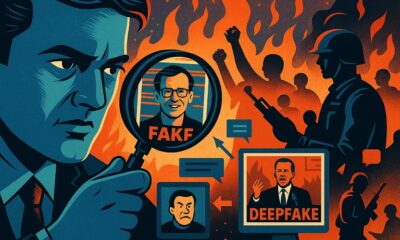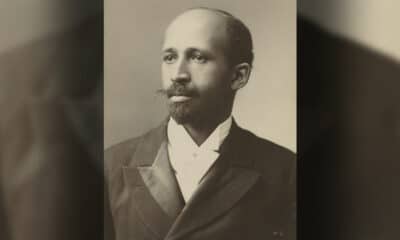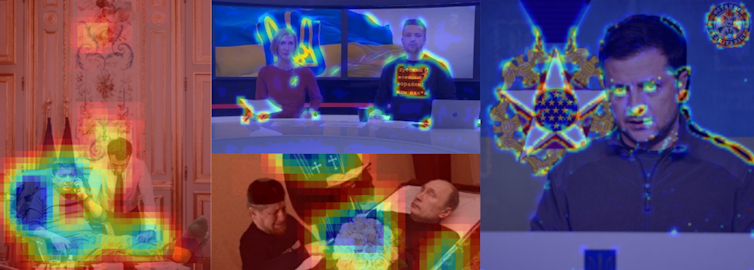
Spencer Platt/Getty Images)
Whole Foods workers at the Philadelphia flagship store in the city’s Art Museum area voted to unionize on Jan. 27, 2025. They are the first store in the Amazon-owned grocery chain to do so.
Paul Clark, a professor of labor and employment relations at Penn State University, talked to Kate Kilpatrick, The Conversation U.S. Philadelphia editor, about why this is happening – and why in Philly.
The Whole Foods workers in Philadelphia voted 130-100 in favor of unionizing. What do we know about their grievances?
From what I understand, these workers have felt that compensation, benefits and work conditions were not what they should be. Some are long-standing employees and say they struggle to afford their basic necessities.
Why did the union drive effort succeed now, and in Philly?
In the last five years, there has been a surge in union organizing. There are a number of reasons for this. First is the labor market. Low unemployment emboldens workers to take the risk of organizing a union. If workers feel their employer can’t replace them or that they can easily get a similar job, they are less fearful of angering the employer by trying to organize.
The second reason is that the Biden administration was a labor-friendly administration – perhaps the most in history. The U.S. president appoints a majority of members to the National Labor Relations Board, which interprets and enforces the labor law that governs organizing. Under Biden, the NLRB regularly issued decisions that provided greater protection to workers and held employers accountable when they violated workers’ rights. During Republican administrations, the board’s decisions are generally pro-business and provide less protection to workers. So workers had the wind at their back in that regard.
Also recent polling shows that 70% of Americans approve of unions, compared with less than half of Americans just 15 years ago. The generally favorable view of unions creates a more supportive environment for organizing.
And the last factor is that Generation Z, the youngest group of workers, clearly wants more out of their work and employment than previous generations. So we see a lot of young workers across the country organizing at Starbucks, Trader Joe’s, Apple and now at Whole Foods and other stores.
Why Philadelphia? Philadelphia is a relatively strong union town. The percentage of the workforce that is represented by a union is higher in Philadelphia than in most cities and areas of the country. So when workers express interest in organizing in Philadelphia they get a lot of support. Other unions might turn out members for their rallies, pressure the company to not oppose the organizing drive and offer other aid and assistance.
The starting wage at the Philadelphia Whole Foods store is US$16 an hour. Is that considered low when the city’s minimum wage is just $7.25 an hour?
The minimum wage in Philadelphia is $7.25 because that is the federal minimum wage. States can institute a higher minimum wage if they choose to, but Pennsylvania is one of the few Northeast states that hasn’t adopted a minimum wage higher than the federal minimum. The minimum wages in New Jersey, New York and Massachusetts, for example, are $15 or above.
But the minimum wage in Pennsylvania is almost irrelevant because of today’s labor market. Unemployment is low, and many employers have to offer significantly more than the minimum wage to get workers.
And the minimum wage is supposed to be a starting wage for workers with little experience or seniority. What workers want is a living wage. According to the MIT Living Wage Calculator, a single person in Philadelphia needs to earn around $24 per hour to cover the basic costs of living. And Whole Foods is a profitable business. It’s part of Amazon, one of the most profitable, largest companies in the world. I think workers at these companies believe that they play an important role in generating those profits because of the work they do. And they think they should get a fair share of those profits.
How might the Whole Foods workers expect the company to fight back?
When employees win an organizing election as the Whole Food workers have, they have won a battle but not the war. The purpose of forming a union is to improve wages and benefits and working conditions, and you do that by negotiating a contract with the company. That is the next step in the process. But the law only requires employers to bargain with employees – to meet at reasonable times and exchange proposals. It doesn’t compel them to agree to anything.
The typical strategy of companies that aggressively oppose their workers having a union is to drag their feet in bargaining and not sign a contract. That is technically illegal, but labor law in the U.S. is relatively weak, and with good legal advice you can drag out bargaining for a very long time.
We’ve seen this with the Starbucks campaign. The first Starbucks store unionized in 2021. Over 540 stores have organized since then. And Starbucks workers at those stores still do not have a contract.
Could the new Trump administration have any impact on how this plays out in Philly?
The fact that the Trump administration has taken over gives companies more confidence that the standard delay strategy will work.
On Jan. 28, 2025, President Donald Trump fired Jennifer Abruzzo, the general counsel of the NLRB. The general counsel is the official at the board who basically enforces the National Labor Relations Act. Abruzzo was very aggressive in holding employers accountable if they violated the act and in protecting the rights of workers who tried to organize.
Trump’s approach to labor law in his first four years in office was at the other extreme. He appointed as general counsel Peter Robb, who was seen as far less aggressive in protecting workers’ rights and his interpretations of the law were much more pro-business.
Under the Biden administration, if a company was coming to the bargaining table month after month and not agreeing to anything, the NLRB would eventually step in and cite the employer for not bargaining in good faith. The NLRB could find the employer guilty of unfair labor practices and genuinely put pressure on it to bargain a contract.
Based on the board’s actions during the first Trump administration, the board in the next few years will be more likely to allow companies to delay and delay in reaching a contract.
What leverage do the Whole Foods employees have?
They can go on strike. But Amazon has the resources to put up with a strike at one Whole Foods store forever.
Other Whole Foods stores may be considering union drives. The more stores that organize, the more momentum the Philadelphia store will have. But for now, these workers in Philly are going to have their work cut out for them.
That said, they won’t be alone. The Whole Foods workers organized with the UFCW Local 1776, which is basically a statewide union that’s been around for decades. It has a lot of resources and experienced and knowledgeable leaders, plus the resources of the national UFCW. So it’s going to lean into this fight, and these workers will also have a lot of support from the rest of the labor community in Philadelphia.
Earlier this month, three Congressional representatives from Pennsylvania wrote a letter to Jason Buechel, the Whole Foods CEO, and to Jeff Bezos, the Amazon founder, that expressed their concerns about efforts to suppress the union drive. Is that support typical?
It’s not unusual. But there is no legal basis for elected officials to intervene in a labor-management dispute. I’d put that under the heading of community support.
You have a lot of progressive elected officials in Philadelphia who are supportive of unions, and that’s true in Pennsylvania right up to the governor.![]()
Paul F. Clark, Professor of Labor and Employment Relations, Penn State
This article is republished from The Conversation under a Creative Commons license. Read the original article.

























































